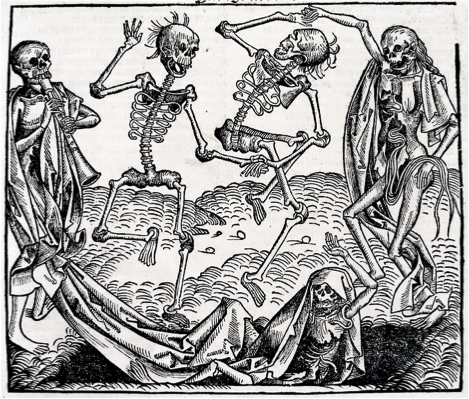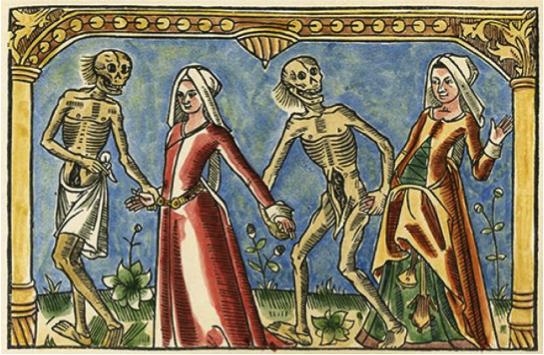The Black Death
|
You will need to know:
What was the Black Death and how was it caught? The Black Death was a combination of two diseases: the bubonic and the pneumonic plague. This led to death by septicemia – blood poisoning. |
 |
Bubonic plague was a bacterium, which lives in the gut of a black rat. A flea would bite the rat and ingest the bacterium. This would multiply in the flea until its digestive system became blocked. This would cause it to become hungry so it would to another animal to feed – a human. The flea would bite the human but would vomit and excrete into the bite. The human would scratch the bite and so rub the bacterium into their body. Large black swellings – or buboes – would cover the body and become hot with infection. The patient would have a fever, headache and feel nauseous. Within 7 to 10 days the nervous system had shut down and the patient would die. You had a 30% (1 in 3) chance of survival. Pneumonic Plague was an airborne virus, which would be inhaled and would attack the lungs. The patient would have a fever and would cough up blood and pus – spreading the virus as they did so. Death came within 3 very painful days and the survival rate was less than 1% (1 in 100). |
|
The disease originated in China and spread through trade routes with the East. The Black Death entered England in Melcombe, Dorset in June 1348. It had arrived in grain ships from France. The disease spread very quickly. As people did not know what caused the disease, they did nothing to contain it. People lived happily amongst rats and fleas and their houses were built of materials which rats loved – straw, wood and mud. Without knowing, people would spread the disease and share their homes with plague victims. Travellers and traders would spread the disease around the country. What did people believe caused the plague? As people had little or no actual medical or biological knowledge, they did not know what actually caused the plague. Some ideas were:
|
 |
 |
How did people try and cure and prevent the disease? Remember, nobody knew what caused the plague at the time so the remedies are not based on any medical knowledge.
|
|
What were the effects of the Black Death? The effects were devastating and wide-ranging and can be divided into roughly three sections: social, economic and religious.
Social: one third to one half of the population was simply killed. Families were devastated and whole villages were killed which led to their desertion. People could not cope with the large numbers of dead bodies and many were slung into mass graves. |
 |
|
Economic: many workers were killed and there was a labour shortage, which led to a subsequent famine as there were hardly any workers to gather in the harvest. With food scarce, there was great inflation and, in some instances, produce rose 400% in price. In light of this, surviving peasants demanded higher wages for their work. If their lord refused, they would find another lord who was prepared to pay. This started the breakdown of the feudal system and the surviving peasants found themselves cash-rich and with more freedom. However, lords and government were keen to put them “back into place”. Rents were raised and in 1351 the government issued the Statute of Labourers, which put wages back to pre-plague levels and forced everybody back to their original lands in fear of being fined or imprisoned. With fewer workers, new ideas about farming were introduced and landlords started rearing sheep as this required fewer workers; England’s future wool trade is based on this. Religious: The Church was one of the worst hit sectors. They lost huge numbers of clergy as they had such great exposure to plague victims; three Archbishops of Canterbury also died. Due to this shortage of clergy, untrained people had to take services and confession – even women, which was unheard of at the time. As these clergy were untrained, English became the language of the church, rather than Latin. Colleges – e.g. Winchester – were founded to re-educate clergy. People’s beliefs changed: some still saw this as a punishment from God and the plague strengthened their faith; others questioned their belief in God. As you can see, there were short term and long term consequences, one of which was the Peasants' Revolt. |